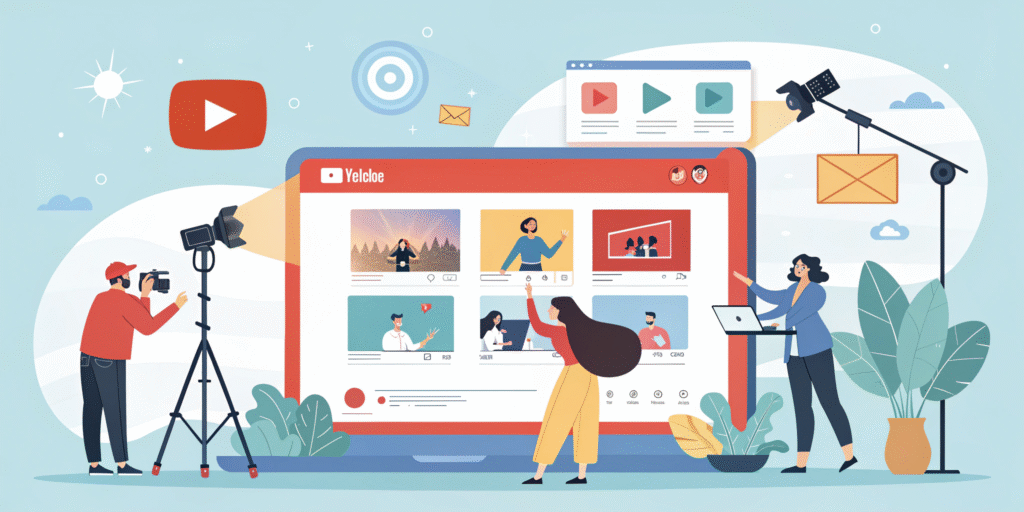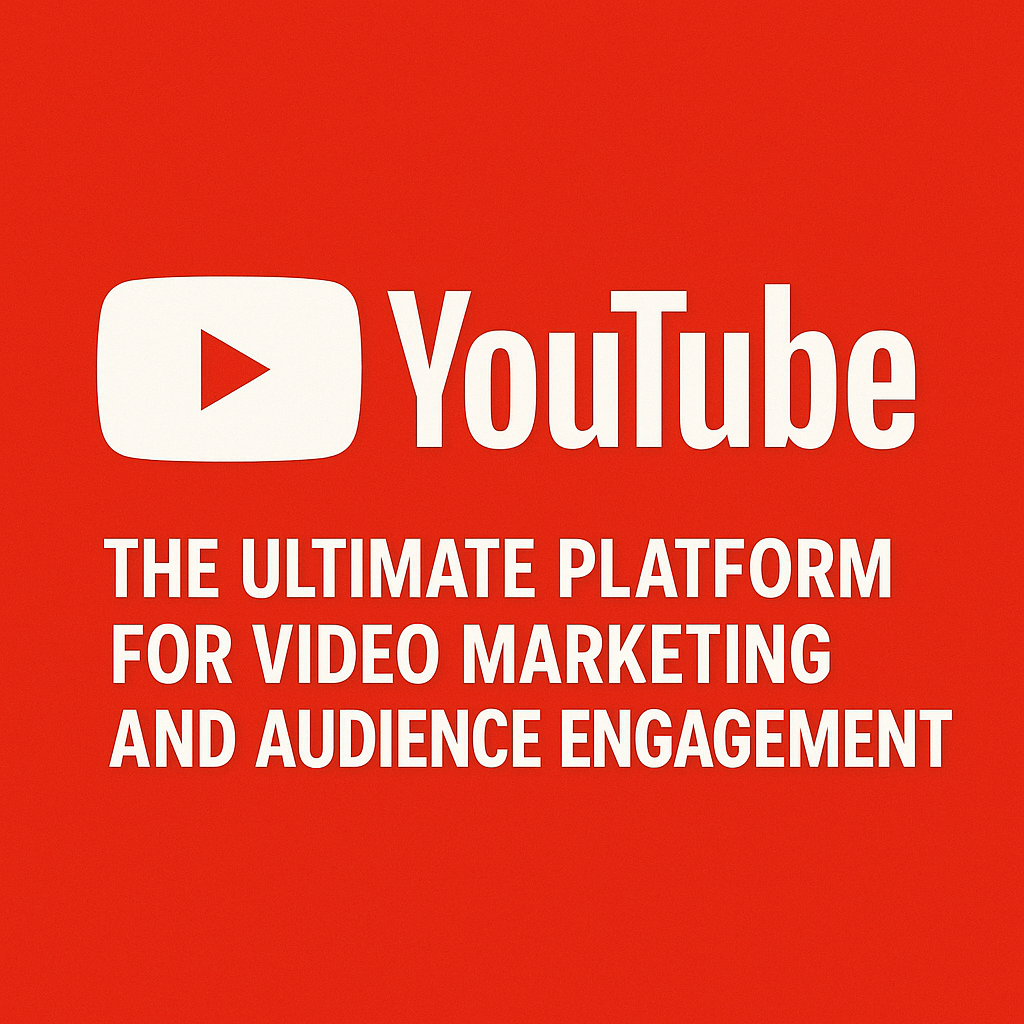
Introduction
In the digital age, video is king, and YouTube sits firmly on the throne. As the world’s second-largest search engine after its parent company, Google, YouTube is an indispensable tool for anyone looking to build an audience, promote a brand, or share knowledge. With over 2.5 billion logged-in monthly users, the platform offers unparalleled reach. For entrepreneurs, marketers, and content creators, understanding YouTube is no longer optional—it’s essential for success. This comprehensive guide will walk you through everything you need to know, from its humble beginnings to its powerful business potential.
History & Evolution: From Humble Startups to Global Dominance
YouTube’s story is a classic tale of Silicon Valley innovation. Founded in February 2005 by three former PayPal employees—Chad Hurley, Steve Chen, and Jawed Karim—the platform was born from a simple problem: the difficulty of sharing video clips online.
- The First Video: The very first video, “Me at the zoo,” uploaded by Jawed Karim on April 23, 2005, set the stage for a user-generated revolution.
- Rapid Growth: The idea of easy video sharing resonated instantly. By the end of 2005, the site was serving over 2 million video views per day.
- The Google Acquisition: Recognizing its immense potential, Google acquired YouTube in November 2006 for $1.65 billion in stock—a move now seen as one of the most visionary acquisitions in tech history.
- Key Milestones:
- 2007: The introduction of the Partner Program, allowing creators to monetize their content.
- 2010: The launch of TrueView ads, giving viewers more control over the ads they watch.
- 2015: The release of YouTube Kids, a safer environment for younger audiences.
- Present Day: YouTube has evolved far beyond a video site. It’s a live-streaming platform, a music and TV subscription service (YouTube Premium), and a major player in the short-form video space with YouTube Shorts.
Audience & Demographics: Who Watches YouTube?
Understanding YouTube’s vast and diverse user base is key to crafting a successful strategy.
- Massive Reach: YouTube reaches more 18-49 year-olds in the U.S. than any broadcast or cable TV network.
- Global Audience: While the U.S. has a significant user base, over 70% of watch time comes from outside the country, making it a truly global platform.
- Age Distribution: The platform boasts a strong presence across all age groups. While Gen Z and Millennials are the core demographic, usage among Gen X and Baby Boomers continues to grow rapidly as they turn to YouTube for tutorials, news, and entertainment.
- User Intent: People use YouTube with various intents, broadly categorized as:
- Learning & How-To: “How to fix a leaky faucet.”
- Entertainment: Music videos, vlogs, and comedy sketches.
- Reviews & Research: “Best laptop for video editing 2025.”
- Community: Niche content that connects people with shared interests.
Key Features & Functions for Creators and Viewers
YouTube’s ecosystem is powered by a suite of robust features designed for both consumption and creation.
For Viewers:
- Personalized Homepage: An algorithmically driven feed suggesting new content based on watch history.
- Playlists: Users can create and share custom collections of videos.
- Live Chat: Real-time interaction during live streams.
- YouTube Premium: An ad-free experience with background play and access to original content.
For Creators:
- YouTube Studio: A powerful dashboard for uploading, analyzing performance, and managing your channel.
- Monetization Tools: Including ad revenue, channel memberships, Super Chat, and the YouTube Partner Program.
- Content ID: A system that allows copyright holders to identify and manage their content on the platform.
- YouTube Shorts: A tool for creating and discovering short-form, vertical videos to compete with platforms like TikTok.

Business & Marketing Potential: Why Your Brand Needs to Be on YouTube
Ignoring YouTube means ignoring a primary channel for modern consumer engagement.
- Builds Authority and Trust: High-quality, informative video content positions your brand as an expert in your field.
- Drives Website Traffic: Well-placed links in video descriptions and end screens can significantly increase visits to your website or product pages.
- Enhances SEO: Videos often appear in Google’s universal search results, increasing your brand’s visibility. Hosting videos on YouTube itself leverages Google’s ownership for powerful SEO benefits.
- Diverse Revenue Streams: Beyond ad revenue, businesses can use YouTube for lead generation, product demonstrations, and as a platform for paid digital products like online courses.
Best Practices & Tips for YouTube Success
Creating a successful YouTube channel requires more than just uploading videos. Here are key strategies.
Content is King:
- Solve a Problem or Entertain: Your content should have a clear value proposition. Answer a common question or provide high-quality entertainment.
- Prioritize Quality Audio: Viewers will forgive mediocre video quality before they forgive poor audio. Invest in a good microphone.
- Hook Viewers Early: The first 15 seconds are critical. State clearly what the viewer will learn or see.
Optimize for Discovery:
- Keyword-Rich Titles: Include relevant search terms naturally in your video titles.
- Detailed Descriptions: Write comprehensive descriptions (over 200 words) that include key phrases and links.
- Custom Thumbnails: Create eye-catching, high-contrast thumbnails that make people want to click.
- Use Playlists: Group related videos together to increase watch time and keep viewers on your channel longer.
Engage with Your Community:
- Respond to Comments: Building a community fosters loyalty and encourages viewers to return.
- Use Calls-to-Action (CTAs): Encourage viewers to like, subscribe, and comment. Ask them questions to spark discussion.
Challenges & Limitations
While powerful, YouTube is not without its challenges.
- Algorithm Dependency: Changes to the recommendation algorithm can dramatically impact a channel’s visibility and growth.
- High Competition: With millions of hours of content uploaded daily, standing out requires significant effort and strategy.
- Copyright Issues: Navigating music and content copyright can be complex for creators.
- Monetization Hurdles: Meeting the threshold for the YouTube Partner Program (1,000 subscribers and 4,000 watch hours) can be a steep climb for new creators.
- Content Moderation: The platform faces ongoing challenges in effectively moderating harmful or inappropriate content at scale.
Future Outlook: What’s Next for YouTube?
YouTube continues to evolve to meet changing user habits and technological trends.
- The Rise of Short-Form Video: YouTube Shorts will remain a major focus as the platform battles for dominance in the short-form space.
- Interactive Features: Expect more interactive elements like polls, quizzes, and shoppable videos to enhance engagement and e-commerce.
- AI Integration: Artificial intelligence will play a larger role in content creation (e.g., automated editing tools) and discovery (even more personalized recommendations).
- E-commerce Integration: Features that allow direct purchasing from videos will likely expand, turning YouTube into a more robust sales channel.

Conclusion
YouTube has fundamentally changed how we consume media, learn new skills, and connect with communities. For businesses and creators, it represents a dynamic and powerful channel for growth. While the landscape is competitive, the opportunities for those who master its nuances are immense. By creating valuable content, optimizing for discovery, and genuinely engaging with your audience, you can harness the power of YouTube to achieve your goals. The time to start is now.